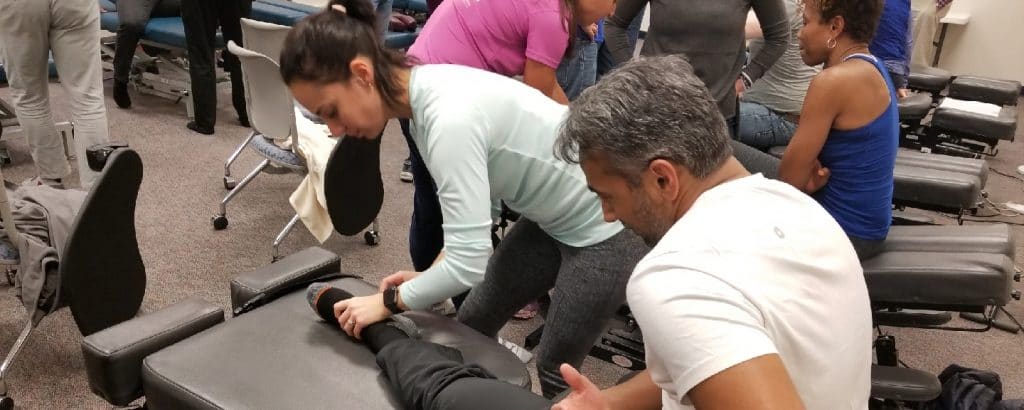Myofascial Release vs. Active Release Technique:
Unlocking the Potential of Soft Tissue Therapies
The world of soft tissue therapies has evolved rapidly in recent years, providing relief and recovery options for individuals suffering from a wide range of musculoskeletal conditions. Among the most popular and effective of these therapies in Charlotte, NC are Myofascial Release (MFR) and Active Release Technique (ART). Both techniques target the fascia and muscles, aiming to restore function and alleviate pain. I will delve into the details of each therapy, discussing their applications, benefits, and how they compare to one another.
Understanding Myofascial Release
Myofascial Release is a hands-on manual therapy that targets the fascial system, which is the connective tissue that surrounds and supports the muscles throughout the body. Fascia can become restricted or adhered due to injury, inflammation, or overuse, leading to pain, reduced range of motion, and diminished function. MFR works to release these restrictions, allowing the fascia and muscles to move more freely and function optimally.
MFR practitioners use a combination of sustained pressure and gentle stretching techniques to soften and elongate the fascia. The pressure is applied slowly and gradually, allowing the therapist to feel for restrictions and adjust their approach as needed. By working with the body’s natural healing process, MFR can provide lasting relief from pain and improved function.
Common Applications of Myofascial Release
- Chronic pain: MFR can help alleviate pain resulting from conditions such as fibromyalgia, migraines, and temporomandibular joint (TMJ) dysfunction.
- Musculoskeletal issues: MFR is effective in addressing issues such as neck and back pain, sciatica, carpal tunnel syndrome, plantar fasciitis, and more.
- Postural imbalances: MFR can help correct imbalances in the body resulting from poor posture, scoliosis, or other structural misalignments.
- Sports injuries: Athletes can benefit from MFR to aid in the recovery process and prevent future injuries by addressing underlying soft tissue restrictions.
Active Release Technique: An Overview
Similar to Myofascial Release, Active Release Technique is a soft tissue therapy that targets muscles, tendons, ligaments, fascia, and nerves. Developed by Dr. Michael Leahy, a chiropractor and certified athletic trainer, ART focuses on breaking down scar tissue and adhesions that form as a result of injury, overuse, or chronic tension.
By using their hands to evaluate the texture, tightness, and movement of the soft tissue, ART practitioners can identify and treat specific areas of restriction. They then apply manual pressure while guiding the patient through specific movements designed to break up scar tissue and adhesions, ultimately promoting the healing process and restoring normal function to the affected area.
Common Applications of Active Release Technique
- Sports injuries: ART is particularly popular among athletes, as it can help treat injuries including sprains, strains, tendonitis, and muscle imbalances.
- Repetitive strain injuries: ART is effective in treating conditions resulting from repetitive movements, such as carpal tunnel syndrome, golfer’s elbow, and tennis elbow.
- Post-surgical recovery: By breaking down scar tissue and adhesions, ART can help improve mobility and function in patients recovering from surgery.
- Chronic pain: ART can provide relief for individuals experiencing ongoing pain due to conditions like sciatica, back pain, and neck pain.
Comparing Myofascial Release and Active Release Technique
Differing Goals and Techniques
- Approach to Treatment: MFR focuses on the slow, sustained application of pressure and stretching to release fascial restrictions, while ART involves the combination of manual pressure and specific movements to break down scar tissue and adhesions. In essence, MFR is a more passive approach, whereas ART is more active and dynamic.
- Targeted Tissues: While both techniques address the fascial system, ART also targets muscles, tendons, ligaments, and nerves, offering a more comprehensive treatment for a broader range of conditions.
- Treatment Duration: MFR sessions may be longer, as the sustained pressure and stretching techniques require more time to effectively release fascial restrictions. ART sessions, on the other hand, may be shorter due to the more dynamic nature of the technique.
- Patient Involvement: During MFR treatments, patients typically remain passive while the therapist applies pressure and stretching techniques. In contrast, ART requires patients to actively participate by performing specific movements as directed by the practitioner.
- Popularity Among Athletes: Although both therapies can benefit athletes, ART has gained a stronger reputation within the sports community due to its focus on addressing the demands of athletic performance and recovery.
How I Use Myofascial Release AND Active Release with My Patients
In my Charlotte practice, I generally prefer Active Release Technique. I find I not only get better results with patients but I get faster results than with only myofascial release. To be honest however, most patients will receive a combination of both therapies throughout their entire treatment duration.

Soft tissue techniques in general are trial and error. Sometimes, the most effective way to determine which therapy is right for you is to try both and assess which one provides the best results. It’s important to remember that each individual’s experience and response to treatment can vary, so what works for someone else may not necessarily work for you.
And in some situations, the patient simply can’t provide the assisted movement required to perform Active Release. It may be due to injury or pain. In those cases, myofascial release works better. Similarly with elderly patients and patients on blood thinners or other medications, I prefer to use myofascial release.
Lastly, I always consider the goals of my patients. If you are an athlete seeking to enhance performance and recover from sports-related injuries, ART may be more suitable due to its targeted and dynamic approach. However, if you are looking for a more gentle, passive therapy to address chronic pain or postural issues, MFR might be a better fit.
Myofascial Release and Active Release Technique are both powerful soft tissue therapies that offer unique approaches to treating a wide range of musculoskeletal conditions. By understanding the key differences between these techniques and considering your personal needs and goals, I can make an informed decision about which therapy is best suited to help you achieve optimal health and well-being.

